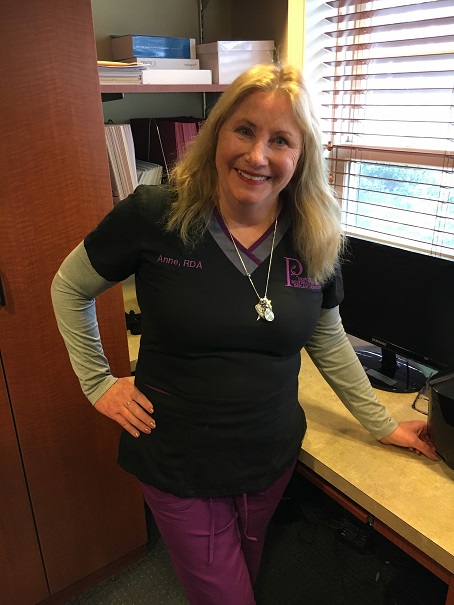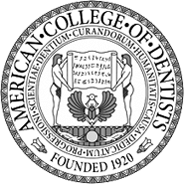The Benefits of Radiographs
April 16th, 2019
Maintaining proper oral hygiene is beneficial to overall health. Depending on the frequency of an individual's professional periodontal cleaning program, a periodic (semi-annual) oral evaluation may or may not be needed. During the evaluation, a visual exam of the soft tissues (gums, cheek mucosa, tongue) and hard tissues (teeth) is performed.
The visual exam allows your dentist and hygienist to be able to see the exposed portions of your teeth; however, not all surfaces of the teeth are visible to the naked eye. A patient's susceptibility for developing dental decay ("cavities") is a parameter we use to determine the frequency which we recommend radiographs ("x-rays") be taken. While some patients consent to radiographs as part of his/her periodic evaluation, others often vocalize his/her objection(s) to this service.
Our responsibility to our patients is to provide comprehensive care including providing the proper recommendation(s) based on each individual's needs. With information available to us at the click of a button, patients have the ability to research the facts and myths associated with practically any medical procedure. To help you make an informed decision as to what is best for YOUR dental health, we want you to understand both the PROs (benefits) and CONs (risks) associated with dental radiographs.
Benefits
If you were to page through family albums (or now-a-days through digital photo albums), you will likely remember the memory associated with each picture and also see how you have progressed through the years. Radiographs, like photographs, allow us to capture moments in time and analyze any changes that may have occurred within your dental structures.
When appropriate, routine radiographs permit the dental staff to have the ability to: (Colgate)
- Diagnose dental decay between teeth
- Diagnose dental decay under existing restorations
- Diagnose dental decay on root surfaces
- Diagnose bone loss
- Visualize tooth development
- Visualize developmental abnormalities
- Visualize dental abscesses or cysts
- Provide early diagnosis of issues allowing for preservation of tooth and bone structure
Risks
In order to create an image of your teeth, an individual must be exposed to a low-dose of radiation. After the dental professional places the sensor in your mouth and positions the x-ray tube, he/she will then push the trigger button to allow the x-rays to be released. During this brief interval (≤0.2s), an audible beep is heard alerting all in the nearby vicinity that x-rays are passing through a patient's cheek, teeth, gums, and jaw bone in order to reach the sensor and create the image.
Throughout the course of our lives, we are exposed to many types of radiation (some harmful and some non-harmful). In fact, during almost every second of any given day, most people are exposed to some form of electromagnetic radiation. If you have four bitewing radiographs taken during your dental check-up, that is equivalent to the same amount of radiation (~0.005mSv) (ADA) encountered during a one to two hour airplane flight (FAQ, ARPANSA, ACSH); also approximately the same daily cumulative amount of low-level, "non-harmful" background radiation (FAQ) (that emitted from the sun, television, radio, computer, cell phone, etc...). Science has shown that dental radiographs typically account for <3% of an individual’s overall radiation exposure for medical imaging purposes. (ADA, FDA)
Every human has a distinct genetic make-up, so we strive to utilize radiographs on an as needed basis to help ensure proper maintenance of YOUR oral health. While patients have the right to opt out of having dental radiographs taken, keep in mind that the potential infections not visible to the naked eye could be causing more harm to your health than the cumulative effects of check-up radiographs. Thus, for individuals susceptible to cavities and bone loss we suggest more frequent imaging to help assess the status of the disease process. Individuals affected by dry mouth (due to medications or medical issues that cause decreased saliva), we suggest more frequent imaging to help diagnose and minimize the effects of root decay.
References
“Benefits of X-Rays Outweigh Risks.” Oral Health and Dental Care, www.colgate.com/en-us/oral-health/procedures/x-rays/ada-07-x-ray-safety.
Center for Devices and Radiological Health. “Medical X-Ray Imaging - The Selection of Patients for Dental Radiographic Examinations.” U S Food and Drug Administration Home Page, Center for Drug Evaluation and Research, 7 Mar. 2018, www.fda.gov/radiation-emittingproducts/radiationemittingproductsandprocedures/medicalimaging/medicalx-rays/ucm116504.htm.
Dinerstein, Chuck. “Cosmic Radiation, Flight Attendants and Flying the Friendly Skies.” American Council on Science and Health, 25 June 2018, www.acsh.org/news/2018/06/25/cosmic-radiation-flight-attendants-and-flying-friendly-skies-13117.
“Flying and Health: Cosmic Radiation Exposure for Casual Flyers and Aircrew.” ARPANSA, ARPANSA, 10 Jan. 2019, www.arpansa.gov.au/understanding-radiation/radiation-sources/more-radiation-sources/flying-and-health.
“Oral Health Topics - X-Rays.” Electronic Health Records, 21 June 2018, www.ada.org/en/member-center/oral-health-topics/x-rays.
“X-Ray Risk.” XrayRisk.com: FAQ, 28 Jan. 2018, www.xrayrisk.com/faq.php#q20.







